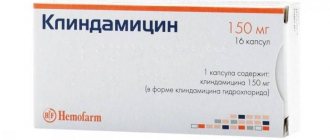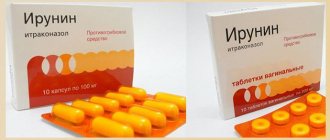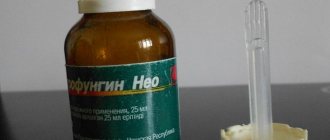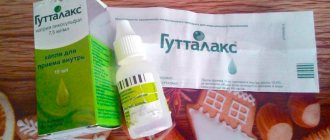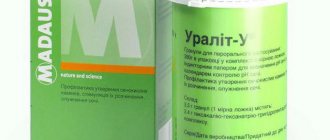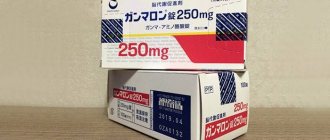Instructions for use
Keppra is an antiepileptic drug that is the primary or adjuvant drug for the treatment of focal epilepsy, partial seizures and convulsive seizures. This medication has a systemic effect in the body, so it can cause extensive side effects, and the risk of drug interactions cannot be ruled out.
Composition and release form
This anticonvulsant medication has several forms of release - solution and tablets for oral administration, concentrate for infusion. Which one to choose is determined by the attending physician individually. For example, Keppra tablets are film-coated and sold in 30 and 60 pieces in one package. A colorless solution with a specific odor is bottled in dark glass bottles of 300 ml. The chemical composition of Keppra in the form of tablets and solution is represented by the following synthetic components:
| Release form of the medicine | Active ingredient | Excipients |
| Pills | Levetiracetam dihydrochloride (250, 500, 1,000 mg) |
|
| Solution | Levetiracetam dihydrochloride (100 mg) |
|
Pharmacodynamics and pharmacokinetics
The active component, being a derivative of pyrrolidone, has not been fully studied in pharmacology. The mechanism of its action is based on the binding of the synaptic vesicle protein SV2A to a glycoprotein, which is a structural component of the gray matter of the brain and spinal cord. This is how the anticonvulsant effect is expressed, which prevents hypersynchronization (unexpected bursts of activity) of neurons. Taking Keppra does not change the transmission of impulses, but suppresses the excitation of glutamate receptors.
The active component is characterized by high penetrating ability and good solubility, is productively adsorbed from the gastrointestinal tract, and fully penetrates into the systemic bloodstream. The bioavailability of levetiracetam is 100%. The active component reaches its maximum concentration 90 minutes after ingestion of the recommended dose of 1000 mg. With a double dose of Keppra, a steady state is observed 2 days after taking the initial dose. Plasma protein binding of levetiracetam and its main metabolite is less than 10%.
The natural process of metabolism occurs through enzymatic hydrolysis of the acetamide group, while levetiracetam does not interfere with the enzymatic activity of liver hepatocytes. The half-life of the active substance varies within 7 hours (+/- 1 hour). The average creatinine clearance reaches 0.96 ml per 1 minute per 1 kg of weight. 95% of levetiracetam is excreted in the urine, so kidney function should be checked before starting the course.
If mild or moderate liver disease predominates in the body, there are no significant changes in the clearance of levetiracetam. With severe damage to the organ, this figure decreases to 50% or lower. The presence of chronic liver diseases is one of the relative contraindications to the use of this medication in full course.
Indications for use
As monotherapy or as part of combination treatment, a full course of this medication is recommended for the following clinical pictures:
- partial seizures with and without secondary generalization (epilepsy);
- myoclonic seizures (juvenile myoclonic epilepsy);
- primary generalized seizures (idiopathic generalized epilepsy).
Keppra solution for oral administration 100 mg/ml vial 300 ml 90933
Description
Keppra® UCB Pharma SA (Belgium) oral solution 100 mg/ml; dark glass bottle (bottle) 300 ml with a measuring syringe, cardboard pack 1; EAN code: 4603149000328; No. LSR-003170/09, 2009-04-24 from UCB SA Pharma Sector (Belgium); manufacturer: NextPharma SaS (France) Latin name Keppra® Active ingredient Levetiracetam* (Levetiracetamum) ATC: N03AX14 Levetiracetam Pharmacological group Antiepileptic drug [Antiepileptic drugs] Nosological classification (ICD-10) G25.3 Myoclonus G40.0 Localized (focal) (partial) idiopathic epilepsy and epileptic syndromes with seizures with focal onset G40.1 Localized (focal) (partial) symptomatic epilepsy and epileptic syndromes with simple partial seizures G40.2 Localized (focal) (partial) symptomatic epilepsy and epileptic syndromes with complex partial seizures G40.3 Generalized idiopathic epilepsy and epileptic syndromes G40.8 Other specified forms of epilepsy Description of the dosage form Concentrate: clear, colorless solution. Tablets, 250 mg: blue, oval, film-coated, with biconvex surfaces, with a one-sided score, on one side of which there is an engraving “ucb”, on the other - “250”; at the fracture - homogeneous, white. Tablets, 500 mg: light yellow, oval, film-coated, with biconvex surfaces, with a one-sided score, on one side of which there is an engraving “ucb”, on the other - “500”; at the fracture - homogeneous, white. Tablets, 1000 mg: white, oval, film-coated, with biconvex surfaces, with a one-sided score, on one side of which there is an engraving “ucb”, on the other - “1000”; at the fracture - homogeneous, white. Solution: transparent, almost colorless, with a characteristic odor. Pharmacological action Pharmacological action - anticonvulsant, antiepileptic. Pharmacodynamics Levetiracetam, the active substance of Keppra®, is a derivative of pyrrolidone (S-enantiomer of α-ethyl-2-oxo-1-pyrrolidine acetamide) and differs in chemical structure from known antiepileptic drugs. The mechanism of action of levetiracetam is not fully understood, but it is obvious that it differs from the mechanism of action of known antiepileptic drugs. In vitro and in vivo experiments have shown that levetiracetam does not affect basic cell characteristics and normal transmission. In vitro studies have shown that levetiracetam affects the intraneuronal concentration of Ca2+ ions, partially inhibiting Ca2+ current through N-type channels and reducing the release of calcium from intraneuronal stores. In addition, levetiracetam partially restores currents through GABA- and glycine-dependent channels reduced by zinc and β-carbolines. One of the proposed mechanisms is based on proven binding to the synaptic vesicle glycoprotein SV2A, contained in the gray matter of the brain and spinal cord. It is believed that in this way an anticonvulsant effect is realized, which is expressed in counteracting the hypersynchronization of neural activity. Levetiracetam also acts on GABA receptors and glycine receptors, modulating these receptors through various endogenous agents. Does not alter normal neurotransmission, but suppresses epileptiform neuronal bursts induced by the GABA agonist bicuculline and the excitation of glutamate receptors. The activity of the drug has been confirmed against both focal and generalized epileptic seizures (epileptiform manifestations/photoparoxysmal reaction). Pharmacokinetics A dose of levetiracetam 1500 mg administered intravenously is bioequivalent to a dose of 1500 mg taken orally in tablet form. Levetiracetam is a highly soluble substance with high penetrating ability. The pharmacokinetic profile is linear with low variability and is comparable in healthy volunteers and patients with epilepsy. The temporal parameters of the independent pharmacokinetic profile of levetiracetam were confirmed by intravenous administration of 1500 mg (2 times a day) for 4 days. No dependence of pharmacokinetics on gender, race or time of day was observed. Suction. After oral administration, levetiracetam is well absorbed from the gastrointestinal tract. Absorption is complete and linear, so plasma concentrations can be predicted based on the dose of levetiracetam taken, expressed in mg/kg body weight. The extent of absorption of levetiracetam does not depend on the dose or time of food intake. Bioavailability is approximately 100%. Cmax is achieved 1.3 hours after oral administration of levetiracetam at a dose of 1000 mg and with a single dose is 31 mcg/ml, after repeated doses (2 times a day) - 43 mcg/ml; after a single intravenous administration of 1500 mg, Cmax was reached after 15 minutes and was (51 ± 19) μg/ml. An equilibrium state is achieved after 2 days with a double dose of the drug. The pharmacokinetics of levetiracetam in children is linear in the dose range from 20 to 60 mg/kg/day, Cmax is reached after 0.5–1 hour. Distribution. The binding of levetiracetam and its main metabolite to plasma proteins is less than 10%. Vd is approximately 0.5–0.7 l/kg. There are no data on the distribution of the drug across tissues. Metabolism. The main metabolic pathway (24% of the dose) is enzymatic hydrolysis of the acetamide group. The formation of the primary pharmacologically inactive metabolite (ucb L057) occurs without the participation of liver cytochrome P450. Levetiracetam does not affect the enzymatic activity of hepatocytes. In vitro, levetiracetam and its main metabolite did not inhibit the major isoforms of cytochrome P450 (CYP3A4, 2A6, 2C9, 2C19, 2D6, 2E1 and 1A2), as well as the activity of glucuronyl transferase (UGT1A1 and UGT1A6) and epoxide hydroxylase. Levetiracetam also did not affect the glucuronidation of valproic acid in vitro. Excretion. T1/2 from the blood plasma of an adult is (7±1) hours and does not depend on the route of administration and dosage regimen. The average total clearance is 0.96 ml/min/kg. 95% of the drug is excreted by the kidneys. The renal clearance of levetiracetam and ucb L057 is 0.6 and 4.2 ml/min/kg, respectively. Special groups of patients Elderly patients. In elderly patients, T1/2 increases by 40% and amounts to 10–11 hours, which is associated with impaired renal function in this category of patients. Renal dysfunction. In patients with impaired renal function, the clearance of levetiracetam and its primary metabolite correlates with creatinine clearance. Therefore, in patients with renal failure, dose selection is recommended depending on creatinine clearance. In end-stage renal failure in adult patients, T1/2 is 25 hours between dialysis sessions and 3.1 hours during dialysis. During a 4-hour dialysis session, up to 51% of levetiracetam is removed. Liver dysfunction. In patients with mild to moderate hepatic impairment, there are no significant changes in the clearance of levetiracetam. In most patients with severe hepatic impairment, the clearance of levetiracetam is reduced by more than 50% due to concomitant renal failure. Children. T1/2 in children 4–12 years of age after a single oral administration of the drug at a dose of 20 mg/kg is 6 hours. The total clearance of levetiracetam in children 4–12 years of age is approximately 30% higher compared to adults and is directly dependent on body weight . After repeated oral administration at a dose of 20–60 mg/kg to children 4–12 years of age, plasma Cmax is reached within 0.5–1 hour and increases linearly and proportionally to the dose. The average total clearance is 1.1 ml/min/kg. T1/2 in children from 1 month to 4 years after a single oral administration of 20 mg/kg oral solution at a concentration of 100 mg/ml is 5.3 hours. Plasma Cmax is achieved approximately 1 hour after taking the drug. The average total clearance is 1.5 ml/min/kg. Indications for Keppra® As monotherapy in the treatment of the following conditions: partial seizures with or without secondary generalization in adults and adolescents over 16 years of age with newly diagnosed epilepsy. As part of complex therapy in the treatment of the following conditions: partial seizures with or without secondary generalization in adults and children over 4 years (concentrate for solution for infusion), 6 years (film-coated tablets), 1 month (oral solution) those suffering from epilepsy; myoclonic convulsions in adults and adolescents over 12 years of age suffering from juvenile myoclonic epilepsy; primary generalized convulsive (tonic-clonic) seizures in adults and adolescents over 12 years of age suffering from idiopathic generalized epilepsy. A concentrate for the preparation of a solution for infusion can be used as a temporary alternative if it is impossible to take oral forms of the drug. Contraindications: hypersensitivity to levetiracetam or other pyrrolidone derivatives, as well as to any components of the drug; impaired fructose tolerance (oral solution); children under 4 years of age - for a concentrate for preparing a solution for infusion and up to 1 month - for a solution for oral administration (the safety and effectiveness of the drug have not been established). With caution: elderly patients (over 65 years old); liver diseases in the stage of decompensation; renal failure. Use during pregnancy and lactation Post-marketing data obtained from several prospective pregnancy registries have documented more than 1000 cases of levetiracetam monotherapy being prescribed in the first trimester of pregnancy. Overall, these data do not indicate a significant increase in the risk of major congenital malformations, although a teratogenic risk cannot be completely excluded. Therapy with multiple antiepileptic drugs is associated with a higher risk of congenital malformations than monotherapy, making monotherapy more appropriate in pregnant women. Adequate and strictly controlled clinical studies on the safety of levetiracetam in pregnant women have not been conducted, therefore the drug should not be prescribed during pregnancy or in women with preserved reproductive function, except in cases of clinical need. Physiological changes in a woman's body during pregnancy can affect the plasma concentrations of levetiracetam as well as other antiepileptic drugs. During pregnancy, a decrease in plasma concentrations of levetiracetam was observed. This decrease is more pronounced in the third trimester (up to 60% of baseline concentrations during the third trimester). Treatment with levetiracetam in pregnant women should be carried out under special supervision. Interruptions in antiepileptic therapy can lead to a worsening of the disease, which can harm the health of both the mother and the fetus. To monitor the effects of levetiracetam use in pregnant women, physicians are recommended to register patient data in the European and International Register of Antiepileptic Drugs (EURAP). Levetiracetam is excreted in breast milk, so breastfeeding during treatment with the drug is not recommended. However, if treatment with levetiracetam is necessary during the feeding period, the risk/benefit ratio of treatment should be carefully weighed against the importance of feeding. Animal studies have not shown any effect on fertility. There are no clinical data on effects on fertility, and the potential risk to humans is unknown. Side effects The adverse event profile presented below is based on an analysis of the results of placebo-controlled studies, as well as post-marketing experience with levetiracetam. The most common adverse reactions were nasopharyngitis, drowsiness, headache, fatigue and dizziness. The safety profile of levetiracetam is generally similar across age groups in adults and children. Adverse reactions are listed below by system and organ and frequency of occurrence: very often (≥1/10); often (≥1/100, <1/10); uncommon (≥1/1000, <1/100); rare (≥1/10000, <1/1000) and very rare (<1/10000). Infections and infestations: very often - nasopharyngitis; rarely - infections. From the blood and lymphatic system: infrequently - thrombocytopenia, leukopenia; rarely - pancytopenia, agranulocytosis, neutropenia. From the immune system: rarely - drug reaction with eosinophilia and systemic manifestations (DRESS syndrome). Metabolic disorders: often - anorexia; infrequently - weight gain, weight loss. Mental disorders: often - depression, hostility/aggression, anxiety, insomnia, nervousness, irritability; uncommon - suicide attempts, suicidal intentions, psychotic disorders, behavioral disorders, hallucinations, anger, confusion, emotional lability, mood swings, agitation, panic attacks; rarely - suicide, personality disorder, thinking disorder. From the nervous system: very often - drowsiness, headache; often - convulsions, imbalance, dizziness, lethargy, tremor; uncommon - amnesia, memory impairment, incoordination/ataxia, paresthesia, decreased concentration; rarely - choreoathetosis, dyskinesia, hyperkinesia. From the side of the organ of vision: infrequently - diplopia, blurred vision. On the part of the hearing organ: often - vertigo. From the respiratory system: often - cough. From the digestive system: often - abdominal pain, diarrhea, dyspepsia, vomiting, nausea; rarely - pancreatitis. From the hepatobiliary system: infrequently - changes in liver function tests; rarely - liver failure, hepatitis. From the skin: often - rash; uncommon - alopecia, eczema, itching; rarely - toxic epidermal necrolysis, Stevens-Johnson syndrome, erythema multiforme. From the musculoskeletal system: infrequently - muscle weakness, myalgia. General disorders: often - asthenia/fatigue. Injuries, complications of procedures: infrequently - accidental injuries. The risk of anorexia is higher with concomitant use of levetiracetam and topiramate. In a number of cases, restoration of hair growth was observed after discontinuation of levetiracetam. Bone marrow suppression has been reported in some cases of pancytopenia. The safety profile in children in placebo-controlled clinical trials was comparable to the safety profile of levetiracetam in adults. In children and adolescents from 4 to 16 years of age, the following adverse reactions were most often recorded: vomiting (very often, 11.2%), agitation (often, 3.4%), mood swings (often, 2.1%), emotional lability ( often, 1.7%), aggressiveness (common, 8.2%), behavioral disorders (common, 5.6%) and lethargy (common, 3.9%). In children from 1 month to 4 years, the following adverse reactions were most often recorded: irritability (very often, 11.7%) and lack of coordination (common, 3.3%). The cognitive and neuropsychological effects of Keppra® were assessed in children aged 4 to 16 years with partial-onset seizures in a double-blind, placebo-controlled study designed to demonstrate non-inferior safety to placebo. The study concluded that Keppra® was no different from (inferior to) placebo in terms of changes in the Attention and Memory and Combined Memory Screen scores of the Leiter-R scale in patients who underwent study according to the protocol, compared with the baseline visit. As a result of the analysis of behavioral and emotional status using a validated instrument, the Achenbach Questionnaire, aggressive behavior was identified in the group of patients taking Keppra®. However, patients treated with Keppra® during long-term follow-up in the open-label phase of the study did not demonstrate deterioration in behavioral and emotional status, in particular, indicators of aggressive behavior did not worsen compared to baseline. Interactions Levetiracetam does not affect the plasma concentrations of antiepileptic drugs (phenytoin, carbamazepine, valproic acid, phenobarbital, lamotrigine, gabapentin, topiramate and primidone), and these antiepileptic drugs do not affect the concentrations of levetiracetam. The clearance of levetiracetam was 22% higher in children taking anticonvulsants, which are inducers of liver microsomal enzymes, compared to children not taking them. A decrease in renal secretion of the primary metabolite was observed when taking probenecid at a dose of 500 mg 4 times a day. The effect of levetiracetam when taken concomitantly with probenecid has not been studied, and it is also unknown when taken with drugs such as NSAIDs, sulfonamides and methotrexate. Levetiracetam at a daily dose of 1000 mg does not alter the pharmacokinetics of oral contraceptives (ethinyl estradiol and levonorgestrel). Levetiracetam at a daily dose of 2000 mg does not change the pharmacokinetics of digoxin and warfarin. Digoxin, oral contraceptives and warfarin do not affect the pharmacokinetics of levetiracetam. There is no data on the influence of antacids on the absorption of levetirametam. The completeness of the absorption of levetiracetam does not change under the influence of food, while the suction rate is slightly reduced. There is no data on the interaction of levetiracetam with alcohol. An overdose of symptoms: drowsiness, agitation, anxiety, aggressiveness, inhibition of consciousness, oppression of breathing, coma. Treatment: In the acute period - induction of vomiting and gastric lavage, followed by the purpose of activated coal (with an overdose of oral forms). There is no specific antidote of Levertiracetam. If necessary, symptomatic treatment is performed in a hospital using hemodialysis (the effectiveness of dialysis for levetiracetam is 60%, for its primary metabolite - 74%). Special instructions if you need to stop taking the drug, then the cancellation of treatment is recommended to be carried out gradually (reducing a single dose by 500 mg every 2-4 weeks). In children, a dose reduction should not exceed 10 mg/kg 2 times a day every 2 weeks, in children younger than 6 months, a dose reduction should not exceed 7 mg/kg 2 times a day every 2 weeks. The concomitant anti -epileptic drugs (during the period of the transfer of patients to the intake of levetiRapetam) it is advisable to cancel gradually. The available information about the use of the drug in children does not indicate any of its negative effects on development and puberty. However, the distant consequences of children's ability to teach, their intellectual development, growth, functions of the endocrine glands, sexual development and fertility remain unknown. The risk of developing anorexia increases with simultaneous use with topiramate. Patients with kidney diseases and decompensated liver diseases are recommended to study the kidney function before treatment, with impaired renal function, dose correction may be required. The concentrate for the preparation of a solution for infusion contains 0.83 mmol (or 19 mg) sodium per ampoule. This should be taken into account patients on a diet with sodium restriction. In connection with the available messages about cases of suicide, suicidal intentions and attempts to suicide in the treatment of levetirateacetam, patients should be warned about the need to immediately inform the attending physician about the appearance of any symptoms of depression or suicidal intentions. The clinical experience of infusion use of levetiracetam in a period exceeding 4 days is absent. The use of the drug is not allowed when changing the color of the solution or the appearance of mechanical inclusions. The solution for oral administration contains maltitol, so patients with impaired fructose tolerance are contraindicated in the appropriate dosage form. The solution for oral administration also contains methyl parahydroxybenzoate and propyl parahydroxybenzoate, which may cause allergic reactions (possibly delayed action). Impact on the ability to drive vehicles and operate machinery. The influence of the drug Keppra® on the ability to drive vehicles and management of mechanisms was not specifically studied. Nevertheless, due to various individual sensitivity to the drug from the central nervous system, during treatment, it is necessary to refrain from driving vehicles and classes of potentially dangerous activities that require increased concentration of attention and speed of psychomotor reactions (some patients may have drowsiness). The form of release is a concentrate for the preparation of a solution for infusions, 100 mg/ml. In a glass bottle, with a tufflon cork, rolled with an aluminum cap, covered with a polypropylene lid on top, providing control of the first opening, 5 ml. 5 bottles in contour cell packaging. 2 contour cell packages in a cardboard pack. Tablets covered with a film shell, 250 mg, 500 mg, 1000 mg. In contour cell packaging (PVC/aluminum foil), 10 pcs. 3 or 6 blisters in a cardboard pack. A solution for oral administration, 100 mg/ml. In the vials of dark glass (type III, pH. EUR.) With a screwed cover of white polypropylene with protection from children, 150 or 300 ml. 1 bottle complete with a measured syringe (PE/polystyrene) in a cardboard pack. The manufacturer is a concentrate for the preparation of a solution for infusion. Pateon Italia S.P.A. VIAL G.B. Stucci, 110-20052, Monza (MB), Italy. Quality Control: Aisika Farmasyutikals S.R.L. Via Pralya 15, 10044 Pyatnets (Turin), Italy. Film-coated tablets. YUSB Pharma S.A. Shemin Du Fore, B-1420 Brine-L 'Avel, Belgium. Oral solution. Nekstfarma SAS. 17 RET de MEOLAN, F-78520 Limei, France. The owner of the registration certificate: USB Pharma S.A. Alley de la Respart 60, B-1070 Brussels, Belgium. Consumer issues and claims to be sent to the address: 105082, Moscow, Peresvedensky per., 13, p. 21. Tel.; Fax: (495) 644-33-29. Conditions of vacation from pharmacies according to the recipe. Conditions for storage of the drug Keppra® in a place protected from light, at a temperature of not higher than 30 ° C. Keep out of the reach of children. The shelf life of the drug KEPPPPI® is 3 years. After opening the bottle - 7 months. Do not use after the expiration date indicated on the package. 2000-2015. Register of Medicines of Russia The database is intended for healthcare professionals. Commercial use of materials is not permitted.
Possible product names
- Keppra solution for oral administration 100 mg/ml vial 300 ml
- KEPPRA 100 MG/1 ML ORAL POSITION 300 ML
- KEPPRA 0.1/ML 300ML FLAC R-R
- KEPRA R-R D/PR. ORAL 100 MG/ML 300 ML. (+MEASURING SYRINGE) X1
- KEPPRA R-R D/VN. TAKING 100 MG/ML FL. 300ML No. 1 (COMPLETE WITH MEASURING SYRINGE)
- KEPPRA 100MG/ML ORAL POSITION 300ML FL. X1 B (R)
- (Keppra) Keppra solution for oral administration 100 mg/ml vial 300 ml
Directions for use and dosage
Tablets and medicinal solution of this medication are intended for oral course use. The recommended dose must first be divided into 2 equal daily doses. The prescribed dosage is increased gradually, but it is important to individually coordinate all possible adjustments with the attending physician, otherwise complications cannot be ruled out.
Keppra tablets
Tablets are allowed to be taken orally by patients aged 16 years and older at a dose of 500 mg, which must first be divided into 2 daily approaches - 250 mg each in the morning and evening. After a week of intensive therapy, the indicated dosage is allowed to be doubled - 500 mg at the same time (1 g per day). The maximum dose of Keppra is no more than 3 g per day; an overdose is dangerous to health.
Keppra syrup
This form of release is recommended for children and adults. The package contains not only instructions for use, but also a measuring syringe (10 ml), which corresponds to 1,000 mg of levetiracetam. The measured solution must be combined with 200 ml of water and taken orally, then washed thoroughly before next use. Recommended dosages of syrup taking into account the age category of patients:
- Age from 1 month to six months: initial dose – 7 mg/kg 2 times a day, can be increased every 2 weeks. The maximum dose is 21 mg/kg.
- Age from six months to 2 years: initial dose – 10 mg/kg body weight, divided into 2 oral doses. The maximum dosage is 30 mg/kg 2 times a day.
- Ages 4 years and older: initial dose – 20 mg/kg body weight, divided into 2 oral doses. The maximum dosage is 60 mg/kg 2 times a day.
- With a weight of 50 kg or more, the dosage of the medicine for children is identical to adult patients and is 1 g, divided into 2 doses.
Concentrate for infusion
This therapeutic composition is intended for intravenous administration to patients over 16 years of age. The medicine should be administered by drip over 15 minutes. One vial of infusion concentrate contains 500 mg of levetiracetam (100 mg/ml), which must be diluted with at least 100 ml of Ringer's solution, 0.9% sodium chloride injection, 5% dextrose injection, or other diluent. The main thing is that the preparation of the medicine must take place under aseptic conditions. Recommended daily dosages of infusion composition:
| Single dosage, mg | Medicine volume, ml | Daily dose, ml |
| 250 | 2,5 | 500 |
| 500 | 5 | 1 000 |
| 1 000 | 10 | 2 000 |
| 1 500 | 15 | 3 000 |
Release form and composition
Keppra is available in the following dosage forms:
- Concentrate for preparing a solution for infusion: transparent colorless solution (5 ml in glass bottles, 5 bottles in blister packs, 2 packs in a cardboard box);
- Film-coated tablets (blue – 250 mg, light yellow – 500 mg, white – 1000 mg): oval, biconvex, on one side there is a line mark separating the engraving “ucb” and the dosage (ucb|250, ucb| 500, ucb|1000), white, uniform when broken (10 pieces in blisters/blister packs, 3 or 6 blisters/packs in a cardboard box);
- Oral solution: clear, almost colorless liquid with a characteristic odor (300 ml in dark glass bottles, complete with a screw cap made of white polypropylene with a childproof function and a measuring syringe (polyethylene/polystyrene), 1 set in a cardboard box ).
The composition of 5 ml of concentrate for the preparation of Keppra infusion solution includes:
- Active substance: levetiracetam – 500 mg;
- Auxiliary components: sodium chloride - 45 mg, sodium acetate trihydrate - 8.2 mg, 10% glacial acetic acid - until pH 5.5 is reached, water for injection - up to 5 ml.
1 Keppra tablet contains:
- Active substance: levetiracetam – 250 mg, 500 mg, 1000 mg;
- Auxiliary components (250/500/1000 mg, respectively): silicon dioxide - 5.188/10.375/20.75 mg, croscarmellose sodium - 10.75/21.5/43 mg, macrogol 6000 - 2.5/5/10 mg, Magnesium stearate – 0.313/0.625/1.25 mg;
- Film coating (250/500/1000 mg respectively): Opadry 85F20694 – 8.063 mg/Opadry 85F32004 – 16.125 mg/Opadry 85F18422 – 32.25 mg.
The composition of 1 ml of Keppra oral solution includes:
- Active substance: levetiracetam – 100 mg;
- Excipients: sodium citrate – 1.05 mg, citric acid monohydrate – 0.06 mg, methyl parahydroxybenzoate – 2.7 mg, propyl parahydroxybenzoate – 0.3 mg, ammonium glycyrrhizate – 1.5 mg, 85% glycerol – 235.5 mg , maltitol – 300 mg, acesulfame potassium – 4.5 mg, grape flavor 501040A – 0.3 mg, purified water – 504 mg.
special instructions
When taking Keppra regularly, a stable concentration of the active component predominates in the patient’s blood. To avoid extremely unpleasant relapses, it is important to remove the medicine from the body gradually: reduce the dose by 500 mg every 2-4 weeks. In childhood, the dosage reduction should not exceed 10 mg/kg body weight every 2 weeks.
To avoid a sharp deterioration in general well-being, before starting the course it is necessary to exclude the development of renal and liver failure in the body. In such clinical cases, individual adjustment of the daily dose may be required. Since the oral solution (syrup) contains maltitol, it is contraindicated in cases of fructose intolerance.
During the period of treatment, it is recommended to temporarily limit driving, since doctors have noticed a depressing effect on the central nervous system. This is explained by the increased sensitivity of nerve receptors to the active component of Keppra. Work that requires increased concentration and speed of psychomotor reactions will also have to be abandoned for a while.
If a patient has suicidal thoughts or has a tendency toward depression, experts warn about the need to promptly pay attention to such symptoms. Cases of suicide have been recorded in medical practice, therefore, in case of unstable psyche, the medicine is prescribed with extreme caution, under vigilant medical supervision.
- Red sea bass baked in the oven with vegetables
- How to avoid troubles on holiday in Turkey: tips for tourists
- Beef chops - recipes with photos. How to cook beef chops in the oven and in a frying pan
Overdose
Symptoms of an overdose of Keppra include anxiety, drowsiness, clouded consciousness, agitation, aggressiveness, depression of the respiratory center, and coma. In the acute period of poisoning, it is necessary to artificially induce vomiting and rinse the stomach, and then take activated charcoal. There is no specific antidote for levetiracetam. If necessary, the patient is prescribed symptomatic therapy in a hospital setting using hemodialysis (dialysis efficiency for the active component of Keppra is 60%, and for its main metabolite - 74%).
During pregnancy
It is highly undesirable to use the drug Keppra during pregnancy and breastfeeding. The exception is cases where the benefit to the health of the mother outweighs the potential risk to the intrauterine development of the fetus. Conservative treatment should be carried out under the supervision of a physician, since due to the lack of studies of these categories of patients, the clinical outcome is difficult to predict.
The active component of the drug is excreted in mother's milk, so it is also advisable for women during lactation to temporarily refrain from using it. Otherwise, you will have to give up breastfeeding the child and switch to artificial formula feeding. The doctor prescribes daily doses and their adjustments strictly on an individual basis.
Drug interactions
The active component of the drug does not interact with anticonvulsants such as Phenobarbital, Phenytoin, Primidone, Carbamazepine, Valproic acid, Lamotrigine, Gabapentin. The medication is often prescribed in combination with other medications, so it is important to take into account the features of individual combinations:
- The effectiveness of oral contraceptives does not decrease when taking the medication.
- In combination with Topiramate, the likelihood of developing anorexia and digestive disorders significantly increases.
- Digoxin and Warfarin do not affect the pharmacokinetics of levetiracetam.
- When taking the drug at the time of eating, the rate of absorption of the active component is slightly reduced.
- Information on the interaction of the active component of Keppra with alcohol has not been received.
Pharmacokinetics
After oral administration, Keppra (tablets) is completely absorbed from the gastrointestinal tract. Adsorption is linear. The concentration of the main component in the blood plasma can be easily predicted based on the dose the patient takes. The bioavailability of the drug is 100%.
The maximum concentration of the drug in the blood is reached one and a half hours after oral administration. The therapeutic effect can be noticed after a few days if you take the tablets twice a day. Keppra solution acts much faster. The patient notices the first results the very next day after the start of therapy.
Side effects of Keppra
Since this medication has a systemic effect, side effects that affect all internal organs cannot be ruled out. When taking Keppra, the condition may worsen from different systems:
- digestive system: dyspepsia, diarrhea, nausea, vomiting, signs of anorexia, hepatitis, weight loss, abdominal pain, hepatitis, stomach discomfort, ataxia;
- CNS organs: asthenic syndrome, dizziness, tremors of the limbs, headaches, insomnia, depression, memory impairment, aggressiveness, emotional lability, increased anxiety, restlessness, amnesia, slow thinking, drowsiness, confusion, mood swings, hyperkinesia;
- respiratory organs: frequent coughing attacks;
- organs of vision: diplopia, impaired accommodation;
- hematopoietic organs: thrombocytopenia, leukopenia, neutropenia, pancytopenia (depression of bone marrow functions);
- skin: alopecia, skin rash, severe itching, erythema multiforme;
- general symptoms: secondary infections, myalgia, nasopharyngitis.
Reviews of the drug "Keppra"
Patients suffering from epilepsy know the drug Keppra. Reviews about the medicine can be heard mostly positive. The main active component helps to significantly reduce the number of seizures. However, at the initial stage of treatment, side effects may develop. They are temporary and do not require discontinuation of therapy.
Negative reviews about the medicine in most cases arise from those patients who have not sufficiently studied the instructions. You should carefully observe the dosage and report any adverse reactions to your doctor.
Contraindications
It is not recommended to use Keppra if the body is hypersensitive to synthetic components. Medical contraindications apply to:
- children's age (tablets up to 4 years, solution up to 1 month);
- fructose intolerance;
- chronic kidney disease;
- diseases in the stage of decompensation.
Analogs
If the drug causes side effects or does not help suppress an epileptic seizure, it is necessary to correctly select an analogue of Keppra. The most effective medications to replace the drug:
- Vimpat. Tablets and syrup are recommended for children over 16 years of age for epileptic seizures with convulsions.
- Gabapeptin. Prescribed to patients over 12 years of age for seizures with or without secondary generalization.
- Convulsion. The medication is recommended for patients over 2 years of age with epilepsy and bipolar disorders.
- Lamictal. The medicine is available in the form of hard and chewable tablets, which can be taken by patients from 2 years of age.
- Lyrics. These are capsules that contain powder with different concentrations of the active ingredient. They are using medication against epilepsy.
- Lamotrigine. These are tablets with a maximum daily dose of 700 mg. The treatment regimen for epileptic seizures is determined individually by the attending physician.
- Topiramate. These tablets are convenient because they need to be taken 1 piece at a time. once a day before bedtime.
- Tebantin. The capsules relieve partial seizures and are recommended for patients over 3 years of age. Correction of daily dosages is made individually.
Indications for use
According to the instructions, Keppra is used simultaneously with other drugs to treat the following conditions/diseases:
- Epilepsy: partial seizures with or without secondary generalization in adults and children over 1 month (oral solution), 4 years (infusion solution, tablets);
- Juvenile myoclonic epilepsy: myoclonic seizures in adults and children over 12 years of age;
- Idiopathic generalized epilepsy: primary generalized convulsive (tonic-clonic) seizures in adults and children over 12 years of age.
As a monotherapy (drug of choice), Keppru is used for partial seizures with or without secondary generalization in adults and adolescents over 16 years of age with newly diagnosed epilepsy.
The concentrate for preparing a solution for infusion is used temporarily when oral forms of the drug cannot be taken for any reason.
Keppra price
This medication is sold in city pharmacies. On average, 250 mg tablets (No. 30) cost 750-900 rubles. Buying Keppra online is much cheaper. Check out the prices in Moscow pharmacies:
| Pharmacy name | Price for Keppra tablets 250 mg (No. 30), rubles |
| Dialogue | 750 |
| 36,6 | 830 |
| Neopharm | 820 |
| Samson-Pharma | 825 |
| Apteka.ru | 833 |


